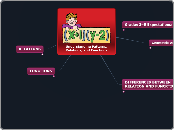
Understanding Patterns, Relations, and Functions
Grades 3–5 Expectations:
describe, extend, and make generalizations about geometric and numeric patterns;
represent and analyze patterns and functions, using words, tables, and graphs.
Geometric And Numeric Patterns
Common Number Patterns
An Arithmetic Sequence is made by adding some value each time.
Example:
1, 4, 7, 10, 13, 16, 19, 22, 25, ...
This sequence has a difference of 3 between each number.
The pattern is continued by adding 3 to the last number each time.
DIFFERENCES BETWEEN RELATION AND FUNCRTION
In mathematics, what distinguishes a function from a relation is that each x value in a function has one and only ONE y-value.
RELATIONS
A relation is just a set of ordered pairs.
Some Examples of Relations include
{ (0,1) , (55,22), (3,-50) }
{ (0, 1) , (5, 2), (-3, 9) }
{ (-1,7) , (1, 7), (33, 7), (32, 7) }
undefined
Note: { } are the symbol for "set"
FUNCTIONS
Functions are a special kind of relation .
At first glance, a function looks just like a relation.
EXAMPLE:{ (0,1) , (5, 22), (11,9) }
Like a relation, a function has a domain and range made up of the x and y values of ordered pairs.
